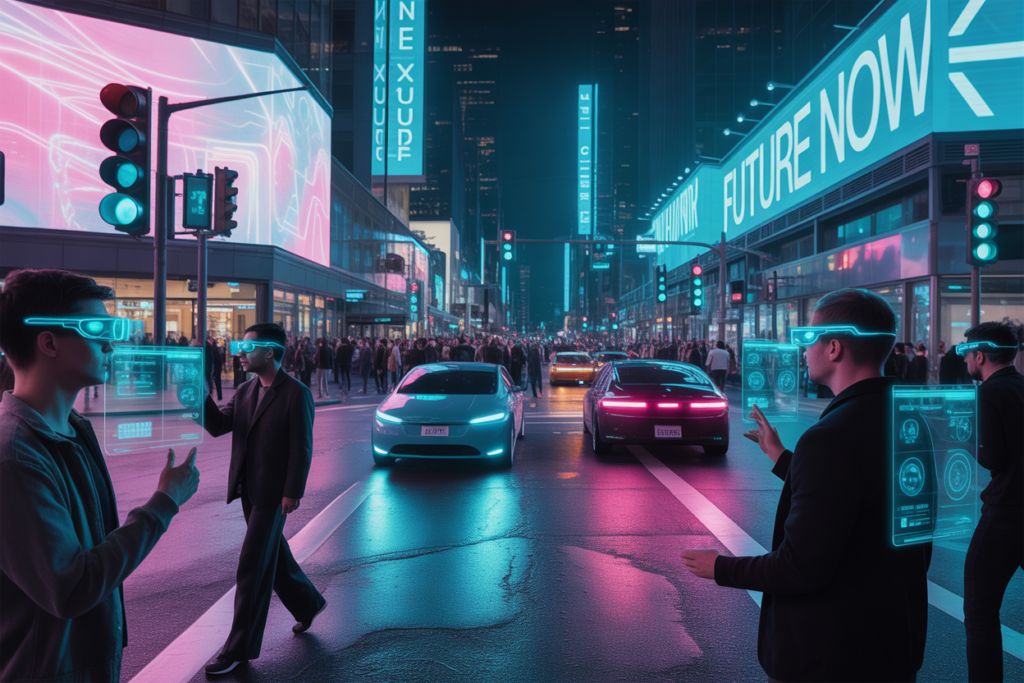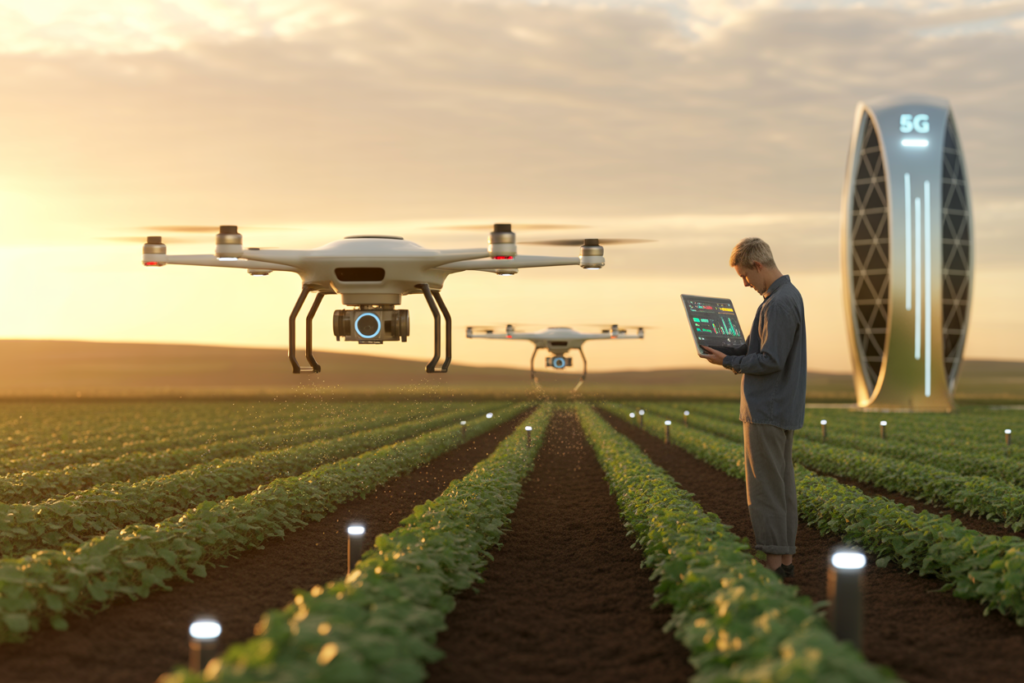The fifth generation of wireless technology, known as 5G, has emerged as a cornerstone of the digital age, revolutionizing connectivity with unprecedented speed, low latency, and massive device support. Since its commercial rollout began in 2019, 5G has evolved rapidly, with advancements in infrastructure, applications, and integration with emerging technologies like artificial intelligence (AI), the Internet of Things (IoT), and edge computing. These breakthroughs are transforming industries, enhancing user experiences, and laying the foundation for a hyper-connected world. This article explores the latest 5G technology advancements, their applications, challenges, and the future they promise, while addressing societal and ethical implications.
The Fundamentals of 5G Technology
What is 5G?
5G is the latest generation of mobile networks, succeeding 4G LTE. It operates on three key spectrum bands:
- Low-band: Offers wide coverage but modest speed improvements.
- Mid-band: Balances speed and coverage, ideal for urban areas.
- High-band (mmWave): Delivers ultra-fast speeds but limited range, best for dense environments.
5G’s core features include:
- High Speeds: Up to 10 Gbps, 100 times faster than 4G.
- Low Latency: As low as 1 millisecond, enabling real-time applications.
- Massive Connectivity: Supports up to 1 million devices per square kilometer.
- Energy Efficiency: Optimized for IoT and battery-powered devices.
The Evolution of 5G
The journey to 5G began with research in the early 2010s, driven by the need for faster, more reliable networks to support growing data demands. By 2025, 5G has reached over 2 billion global connections, according to GSMA, with deployments in 95 countries. Advancements in antenna technology, spectrum allocation, and network slicing have accelerated its adoption, making 5G a catalyst for digital transformation.
Major 5G Technology Advancements
1. Enhanced Mobile Broadband (eMBB)
Enhanced Mobile Broadband is a cornerstone of 5G, delivering gigabit-level speeds for applications like 4K/8K streaming, virtual reality (VR), and augmented reality (AR). In 2024, Verizon and AT&T expanded mmWave deployments in urban centers, achieving peak download speeds of 10 Gbps in stadiums and airports. Mid-band spectrum advancements, such as C-band deployments, have improved coverage without sacrificing speed, making eMBB accessible to suburban areas.
Applications:
- Streaming and Gaming: 5G enables lag-free cloud gaming and ultra-high-definition video streaming.
- Immersive Experiences: AR/VR applications, like virtual concerts and interactive training, thrive on 5G’s bandwidth.
- Smart Cities: High-speed connectivity supports real-time traffic management and public safety systems.

2. Ultra-Reliable Low-Latency Communications (URLLC)
URLLC is a game-changer for applications requiring near-instantaneous response times. In 2025, Nokia and Ericsson achieved latency as low as 0.5 milliseconds in industrial settings, enabling mission-critical use cases. Advancements in edge computing integration have further reduced latency by processing data closer to the source.
Applications:
- Autonomous Vehicles: 5G’s low latency enables real-time communication between vehicles, infrastructure, and pedestrians, reducing accidents.
- Remote Surgery: Surgeons use 5G to perform telesurgery with haptic feedback, as demonstrated in a 2024 trial in China.
- Industrial Automation: Factories leverage URLLC for real-time control of robotic arms and IoT sensors.
Case Study: In 2025, a German automotive plant used 5G URLLC to synchronize 1,000+ robotic arms, increasing production efficiency by 25%.
3. Massive Machine-Type Communications (mMTC)
mMTC enables 5G to connect millions of IoT devices simultaneously, from smart meters to wearable health monitors. Advancements in narrowband IoT (NB-IoT) and LTE-M protocols have improved energy efficiency, allowing devices to operate for years on a single battery. In 2024, Qualcomm’s 5G IoT chipsets reduced power consumption by 40%, expanding mMTC’s reach.
Applications:
- Smart Homes: 5G connects thermostats, lights, and appliances for seamless automation.
- Healthcare: Wearable devices monitor vital signs in real-time, alerting doctors to emergencies.
- Agriculture: 5G-enabled sensors optimize irrigation and monitor soil health, boosting crop yields.

4. Network Slicing
Network slicing allows operators to create virtual networks tailored to specific use cases on a single 5G infrastructure. In 2025, AT&T and Vodafone implemented dynamic network slicing, allocating bandwidth for gaming, enterprise, and public safety. This ensures optimal performance for diverse applications without congestion.
Impact:
- Customized Services: Network slices prioritize low latency for autonomous vehicles or high bandwidth for VR streaming.
- Cost Efficiency: Operators maximize infrastructure use, reducing deployment costs.
- Public Safety: Dedicated slices ensure uninterrupted communication for first responders during emergencies.
5. Integration with AI and Edge Computing
5G’s synergy with AI and edge computing is unlocking new possibilities. AI optimizes network performance by predicting traffic patterns and allocating resources dynamically. Edge computing, supported by 5G’s low latency, processes data locally, reducing reliance on distant cloud servers. In 2024, Google partnered with T-Mobile to deploy AI-driven edge nodes, improving response times for AR applications by 60%.
Applications:
- Smart Retail: 5G and AI enable personalized shopping experiences through real-time customer analytics.
- Industrial IoT: Edge computing processes factory sensor data instantly, improving operational efficiency.
- Gaming: Cloud gaming platforms like NVIDIA GeForce Now leverage 5G and edge computing for lag-free experiences.
6. Private 5G Networks
Private 5G networks, tailored for enterprises, have gained traction in industries like manufacturing, logistics, and healthcare. In 2025, Siemens deployed private 5G networks in 50 factories worldwide, enhancing automation and security. These networks offer dedicated bandwidth, low latency, and enhanced privacy compared to public networks.
Case Study: A Singapore port used a private 5G network to coordinate autonomous cranes and drones, reducing cargo handling times by 20%.
Applications of 5G Technology
1. Healthcare
5G is transforming healthcare by enabling telemedicine, remote monitoring, and robotic surgery. In 2024, a hospital in South Korea used 5G to stream 8K surgical footage to global experts, facilitating real-time collaboration. Wearable devices powered by 5G monitor chronic conditions, reducing hospital visits by 15% in some regions.
2. Transportation
5G supports connected and autonomous vehicles (CAVs) through vehicle-to-everything (V2X) communication. In 2025, Toyota and Qualcomm tested 5G V2X systems, enabling vehicles to share real-time data with infrastructure and other cars, improving road safety. 5G also enhances in-car entertainment with seamless streaming.
3. Smart Cities
5G powers smart city initiatives, from traffic management to energy efficiency. In 2024, Singapore’s 5G-enabled smart grid reduced energy waste by 10%. Real-time surveillance and environmental monitoring improve public safety and sustainability.
4. Entertainment and Media
5G’s high bandwidth supports immersive experiences like 360-degree live streaming and multiplayer VR gaming. In 2025, the Super Bowl was broadcast in 8K over 5G, with fans using AR apps to view player stats in real-time.

5. Industry 4.0
5G drives the fourth industrial revolution by enabling smart factories. In 2025, Bosch used 5G to connect 10,000 IoT devices in a single plant, optimizing production and reducing downtime by 30%. 5G also supports predictive maintenance, identifying equipment issues before failures occur.
Challenges in 5G Deployment
1. Infrastructure Costs
Deploying 5G requires significant investment in base stations, small cells, and fiber optic backhaul. mmWave deployments, in particular, demand dense infrastructure due to their limited range. In 2025, global 5G infrastructure spending reached $50 billion, according to IDC, posing challenges for developing nations.
2. Spectrum Allocation
Securing spectrum for 5G is complex, as governments auction limited bands. Regulatory delays and spectrum fragmentation hinder global standardization. Mid-band spectrum, critical for balanced coverage and speed, remains scarce in some regions.
3. Security and Privacy
5G’s vast connectivity increases cybersecurity risks. In 2024, a 5G network breach exposed IoT device vulnerabilities, prompting calls for stronger encryption. Privacy concerns arise from the massive data generated by 5G-connected devices, requiring robust regulations like GDPR.
4. Health and Environmental Concerns
Public concerns about 5G’s electromagnetic radiation persist, despite studies confirming safety within regulatory limits. Environmental impacts, such as energy consumption from 5G infrastructure, are also under scrutiny, pushing operators to adopt green technologies.
The Future of 5G Technology
1. 5G-Advanced and Beyond
5G-Advanced, expected by 2026, will enhance eMBB, URLLC, and mMTC with features like AI-driven network optimization and extended reality (XR) support. Research into 6G is underway, promising terabit speeds and holographic communication by 2030.
2. Global Expansion
By 2030, 5G is projected to cover 85% of the global population, according to Ericsson. Efforts to bridge the digital divide, such as satellite-based 5G, will connect remote areas, fostering inclusive growth.
3. Integration with Emerging Technologies
5G will continue to converge with AI, quantum computing, and blockchain. For example, 5G and quantum cryptography could create unhackable networks, while blockchain ensures secure IoT data exchanges.
Prediction: By 2030, 5G is expected to contribute $1.3 trillion to the global economy, according to PwC, with significant impacts in healthcare, manufacturing, and transportation.
Societal Implications
5G’s transformative potential extends beyond technology:
- Economic Growth: 5G drives innovation, creating jobs in AI, IoT, and network engineering.
- Accessibility: Affordable 5G could democratize education and healthcare in underserved regions.
- Sustainability: 5G-enabled smart grids and precision agriculture promote environmental conservation.
However, equitable deployment is critical to avoid exacerbating digital divides. Governments and industries must prioritize inclusivity and ethical standards.
Conclusion
5G technology advancements are reshaping connectivity, enabling a future where autonomous vehicles, smart cities, and immersive experiences are commonplace. From enhanced mobile broadband to private networks, 5G is driving innovation across industries. While challenges like infrastructure costs and security persist, the potential for 5G to transform economies and societies is immense. As we move toward 5G-Advanced and 6G, collaboration between stakeholders will ensure a connected, inclusive, and sustainable future.
Leave a Reply